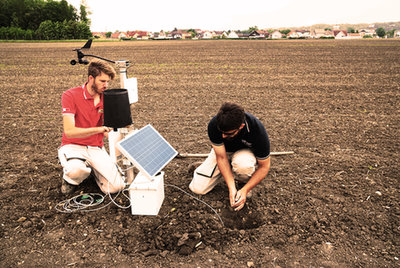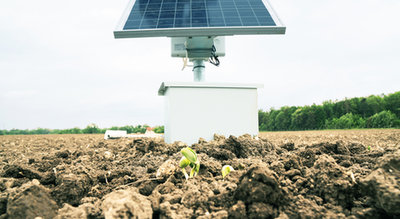interview
‘Soybean protein is a strategic product: we need it for both animal feed and human food. Soya also has great potential as a soil fertility enhancer. Legumes, such as the soybean, live in symbiosis with Rhizobium bacteria.'
'These bacteria fixate nitrogen, which means that soya needs less fertilizer for its growth than other crops. Under the right conditions, cultivating soya enhances soil fertility as more nitrogen than needed for the growth of the beans is fixated.’ However, Europe imports far more soya than it produces. Out of the 31.2 million tonnes of protein-rich soybean meal used for feed in Europe in 2015/2016, only 1.5 million tonnes were produced form EU-grown soybeans.
‘The world’s consumption of soya is rising rapidly, especially on the Asian continent. To meet our own demand and become less dependent on imports, we need to increase our production efficiency. This means we have to improve both the yield and the protein content of the soybeans. Use-case 1.3 focuses on this task,’ says Andrea. ‘In Italy and Austria soya is already one of the most cultivated crops by farmers, together with corn and wheat. In this use-case we investigate, first of all, how all the factors that influence yield and protein content interact. In four years’ time we hope to have built this knowledge into a decision support system (DSS) for the farmers. With the help of this tool, they can optimize the production process from planting to harvesting. This will help them to differentiate and put a high-quality product on the market.’


Scientific literature on how agronomic and environmental factors affect the protein in soybeans is limited. ‘The past year, we’ve collected data at organic and integrated farming locations, two in Austria and two in Italy. We chose these different locations because Austria and Italy are quite different in terms of climate, soil conditions and subsequent product quality. The agronomic experts in our team help to understand how the factors that we measure correlate to influence the quality of the product.’ The data is fed into the decision support system, resulting in a first beta version by the end of this year.
The data is fed into the decision support system, resulting in a first beta version by the end of this year.
Different soybean varieties are tested, too. ‘By the end of the project, we hope to have a clear understanding of which soybean variety suits specific climatic conditions best. We will have a solution that helps farmers with their crop management, suited to the specific environmental and agronomic conditions at their farm. We can’t force farmers to cultivate more soya. But I do hope that our decision support tool will help them start with soybean cultivation and obtain a good profit. This will extend the range of crops used in crop rotation, increase soil quality and diminish our dependency on soya protein import.’
Partners in this use case:
Author: Renske Solkesz, Schuttelaar & Partners
use case
high-quality soya protein management
Andrea Bellin
UC 1.3 Soya Protein Management Coordinator


